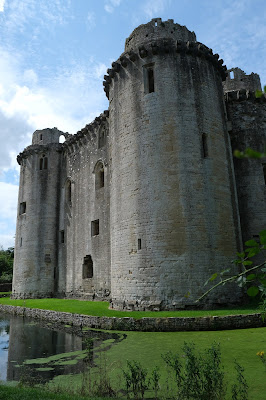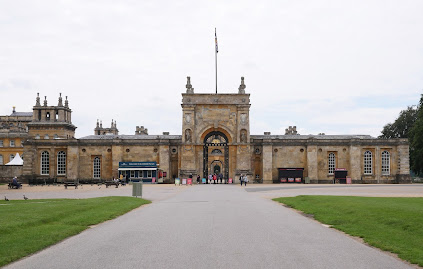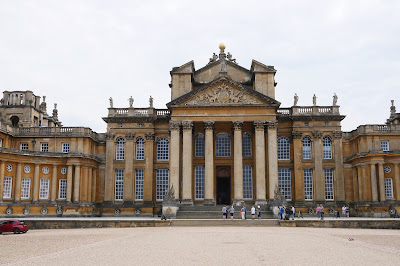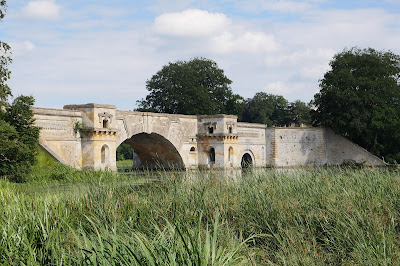Merv and I started our exploration of Frome at the Black Swan Arts Centre where we acquired a map. The Round Tower was built as a wool-drying stove in the 18th century and is a reminder of Frome's cloth industry. It is now the start of the town trail. Opposite, where the cattle market was, is the Market Hall, now a pub.
We crossed the bridge over the River Froom (1667) to reach the handsome Blue House. It was built as an almshouse around 1465 and rebuilt to include a school in 1724. The pupils wore blue uniforms which gave the building its name. It now houses flats for retired people. It was a shame that building works are underway.
We then approached St John the Baptist's Church by following a path parallel to its wonderful Via Crucis (the Way of the Cross).
My photo of the church was taken from the rear, but one taken from the road (Bath St) would have been preferable. The first (saxon) church founded by St Aldhelm in 685AD and replaced by a Norman structure of the late C12 which was gradually extension until reaching the present footprint around
1420. It was largely rebuilt in the 19th century.
We walked down to Bath Street to see the very grand Rook Lane Congregational Chapel of 1707. It was so grand that many Chapel members found it offensive.
We returned past the church and turned right into Gentle Street, where two fine houses could be found on the right hand side: Argyll House of 1766 and 19th century Argyll Lodge.
We continued along the lane passing the massive former Lamb Brewery.
We turned right at the top passing Wesley Villas on the left, a complex of 19th century buildings, to reach the modest Town Hall.
Now left into Wine Street which led us to a delightful little street, Sheppards Barton, which was developed by the Sheppards to provide workshops and houses for cloth weavers. At the end of the street steps lead down into Catherine Hill.
This is the view downhill (back towards the Market Place).
We turned left and passed this curious lovers' post box and the Valentine Lamp, installed in 1993, inevitably on Valentines Day.
At the top end of Catherine St we turned right along Vallis Way which leads into the Trinity area. Our guide book explains that this area was one of the earliest developments of industrial housing in Europe. At the end of Trinity St we admired Trinity Church (1838). Only once I got home did I spot that the church contains stained glass windows designed by Burne-Jones and made by Morris and Co.
We turned right down Trinity St to pass the monumental Butler & Tanners Steam Printing Works.
We continued down hill via Trinity St, Castle St, Milk St and Cork St to return to the start of the walk.
To add extra spice to our walk we headed off to nearby Nunney, where a picturesque medieval castle, Nunney Castle, waited for us. It dates from the 1370 and its builder was Sir John de la Mare, a local knight who was beginning to enjoy royal favour. Much modernised in the late 16th century, the castle was besieged and damaged by the Parliamentarians in 1645, during the English Civil War.
This is the first view you get of the castle: you can deduce that it is rectangular with huge circular towers in each corner.
Once you get inside the enclosure it becomes clear that the Castle is surrounded by a moat. It is pretty battered, but has a very impressive presence.
Conditions: bright and sunny.
Rating: four stars.




































